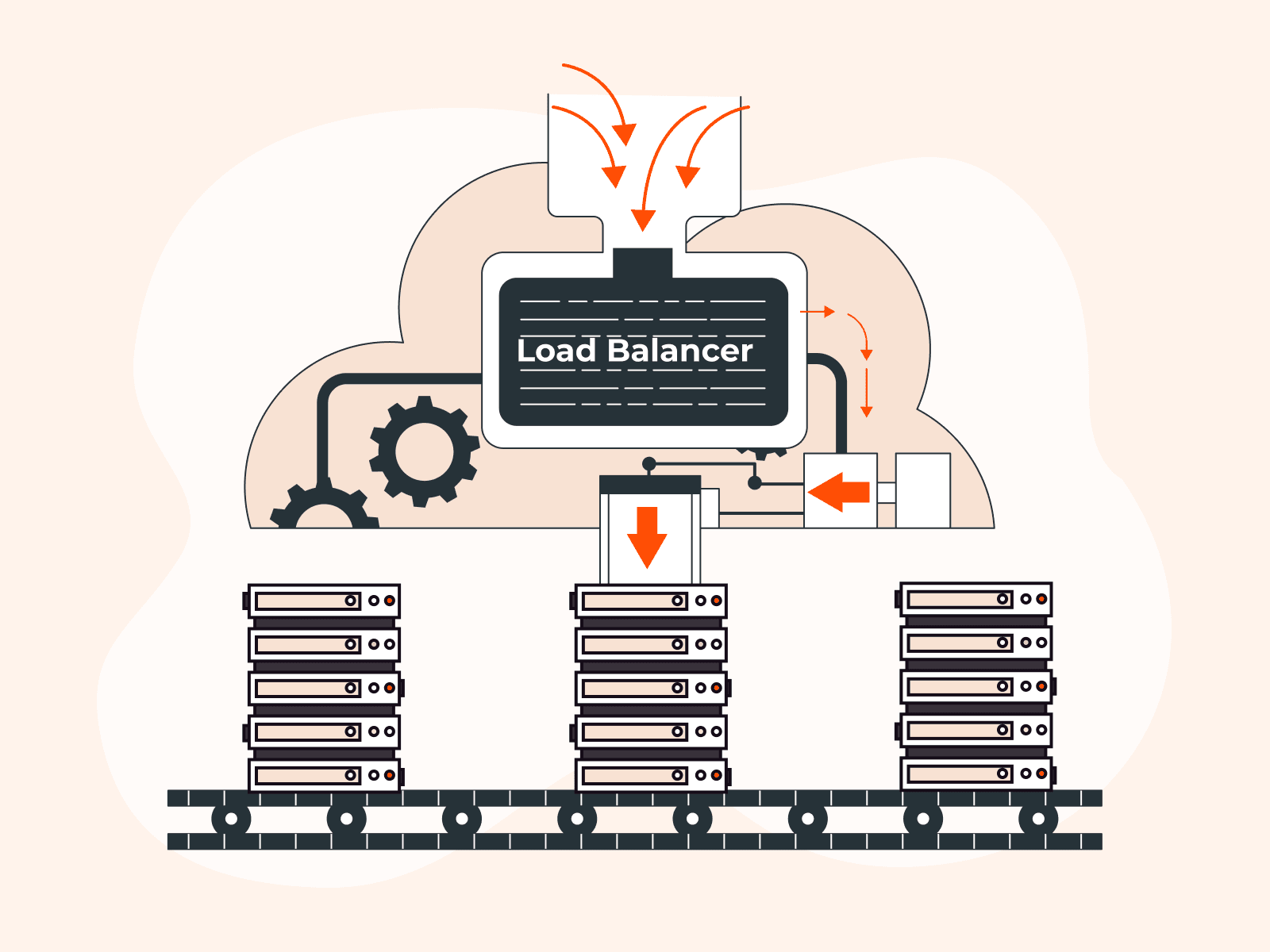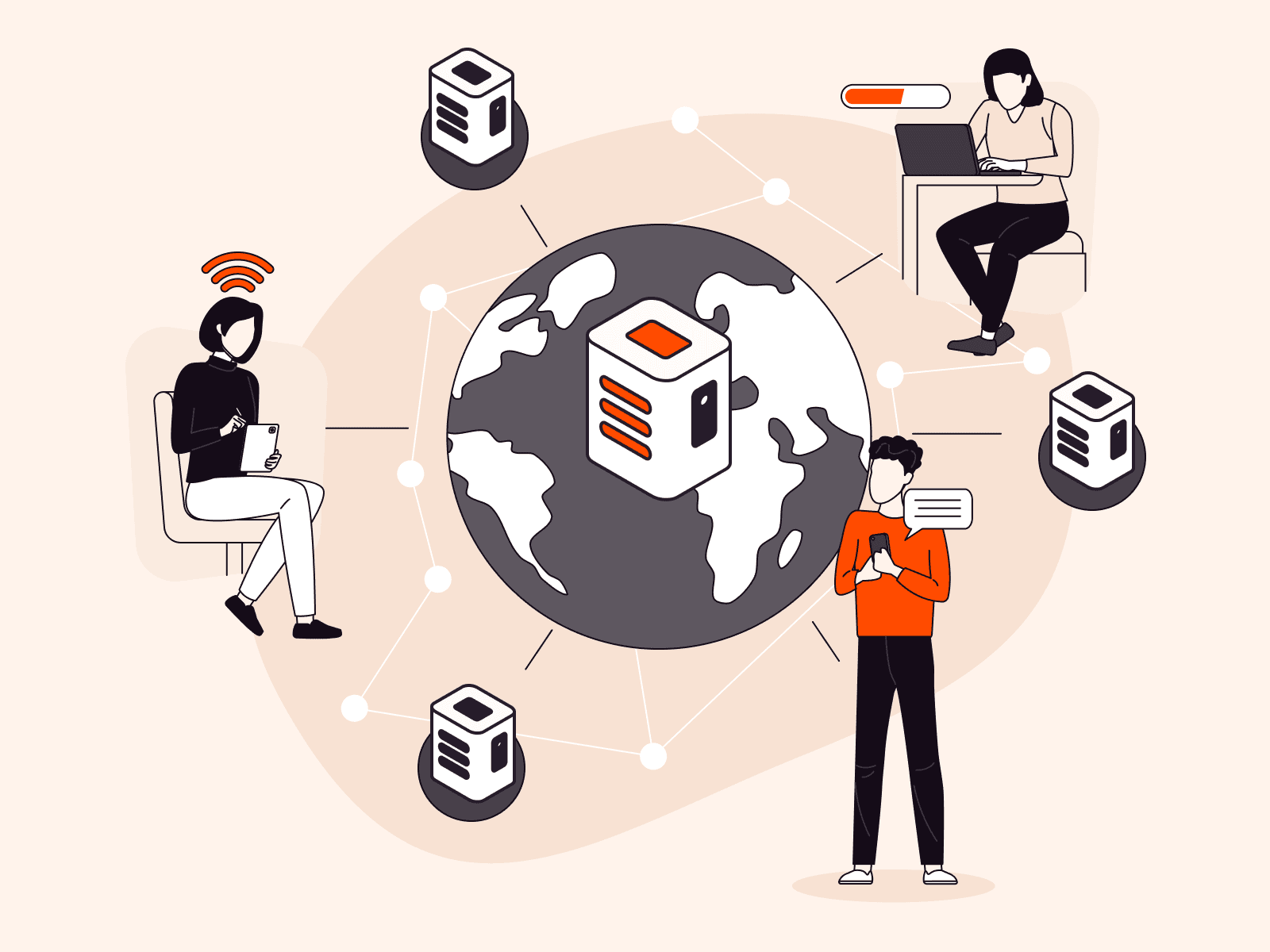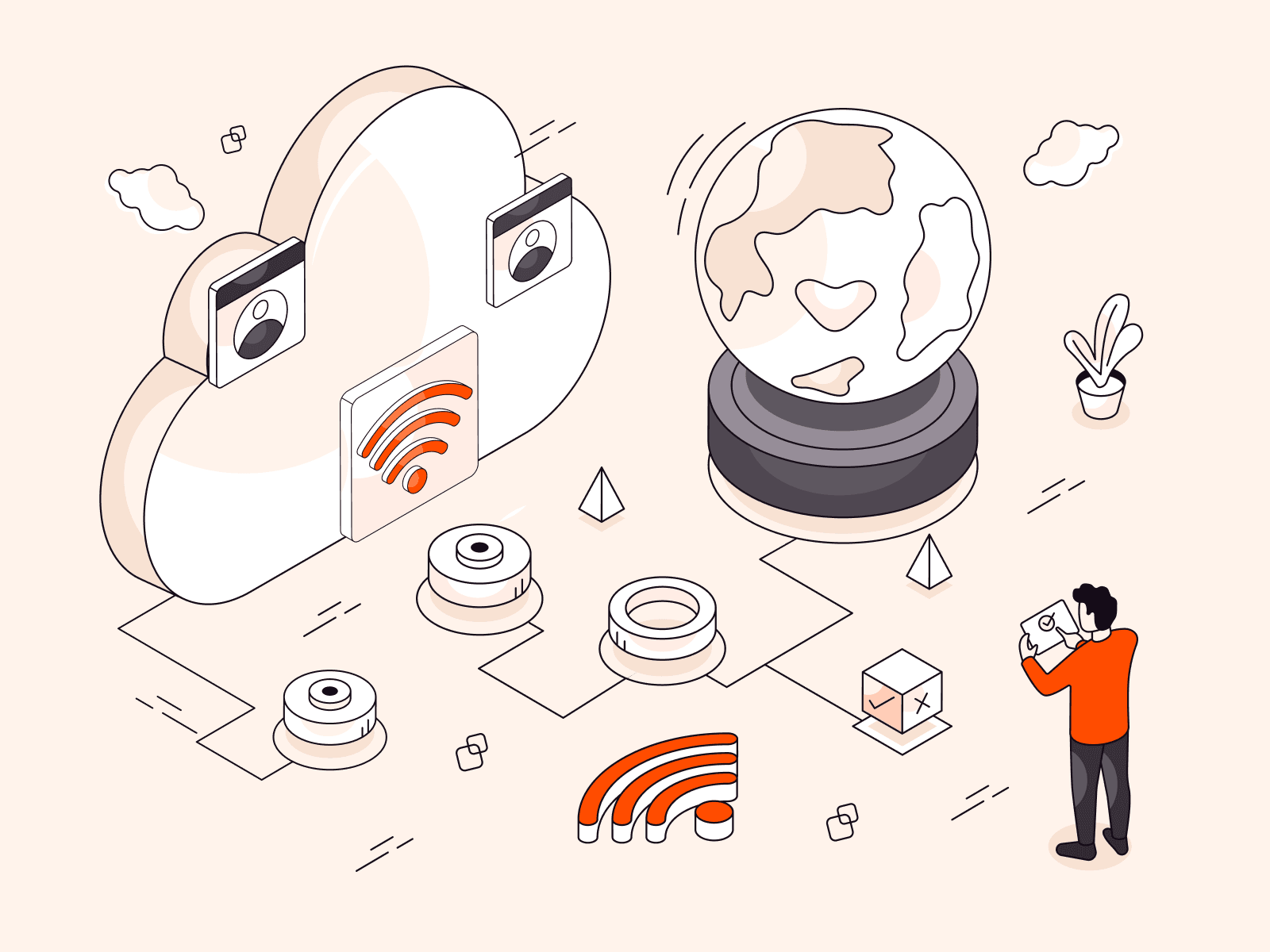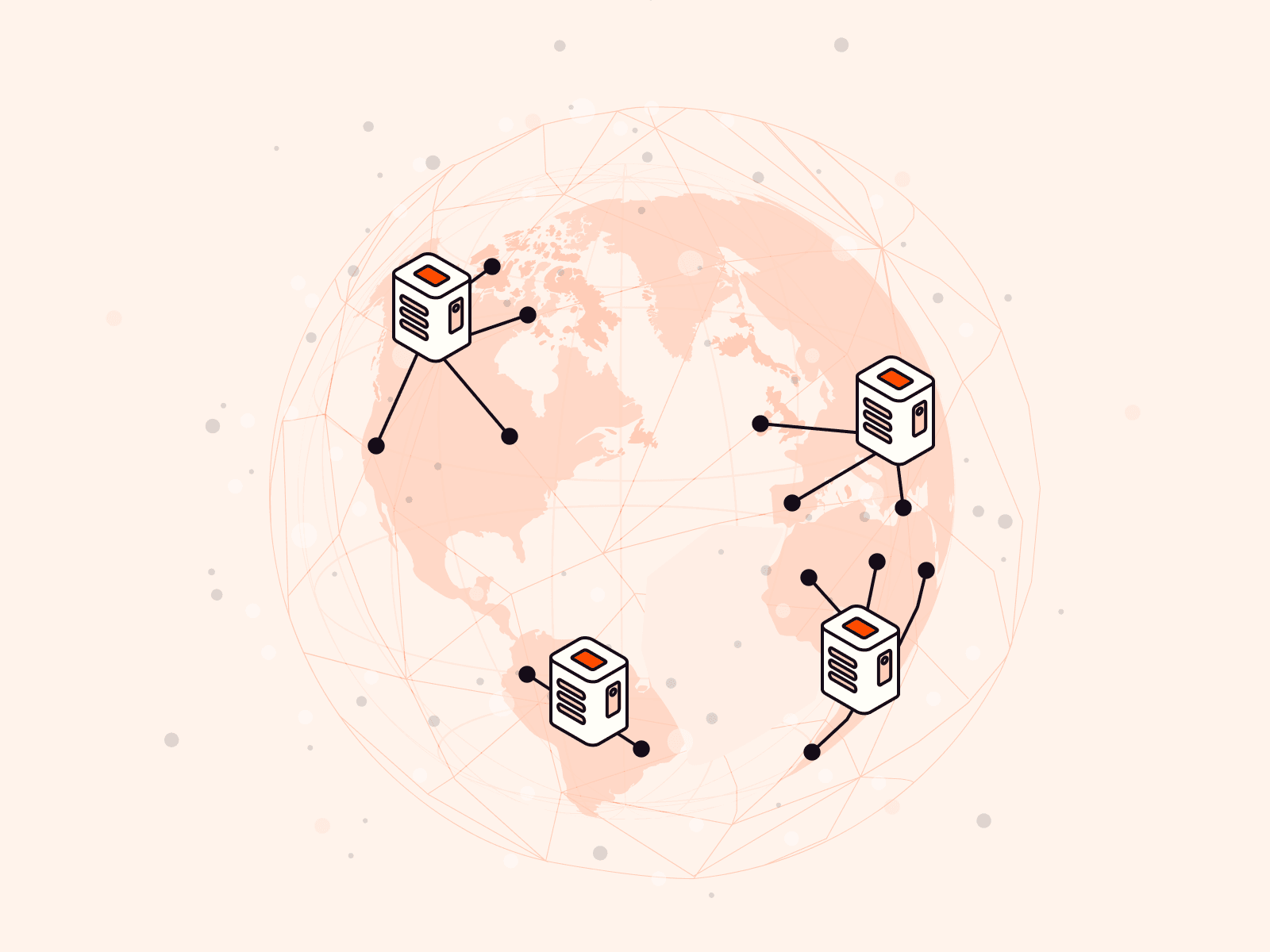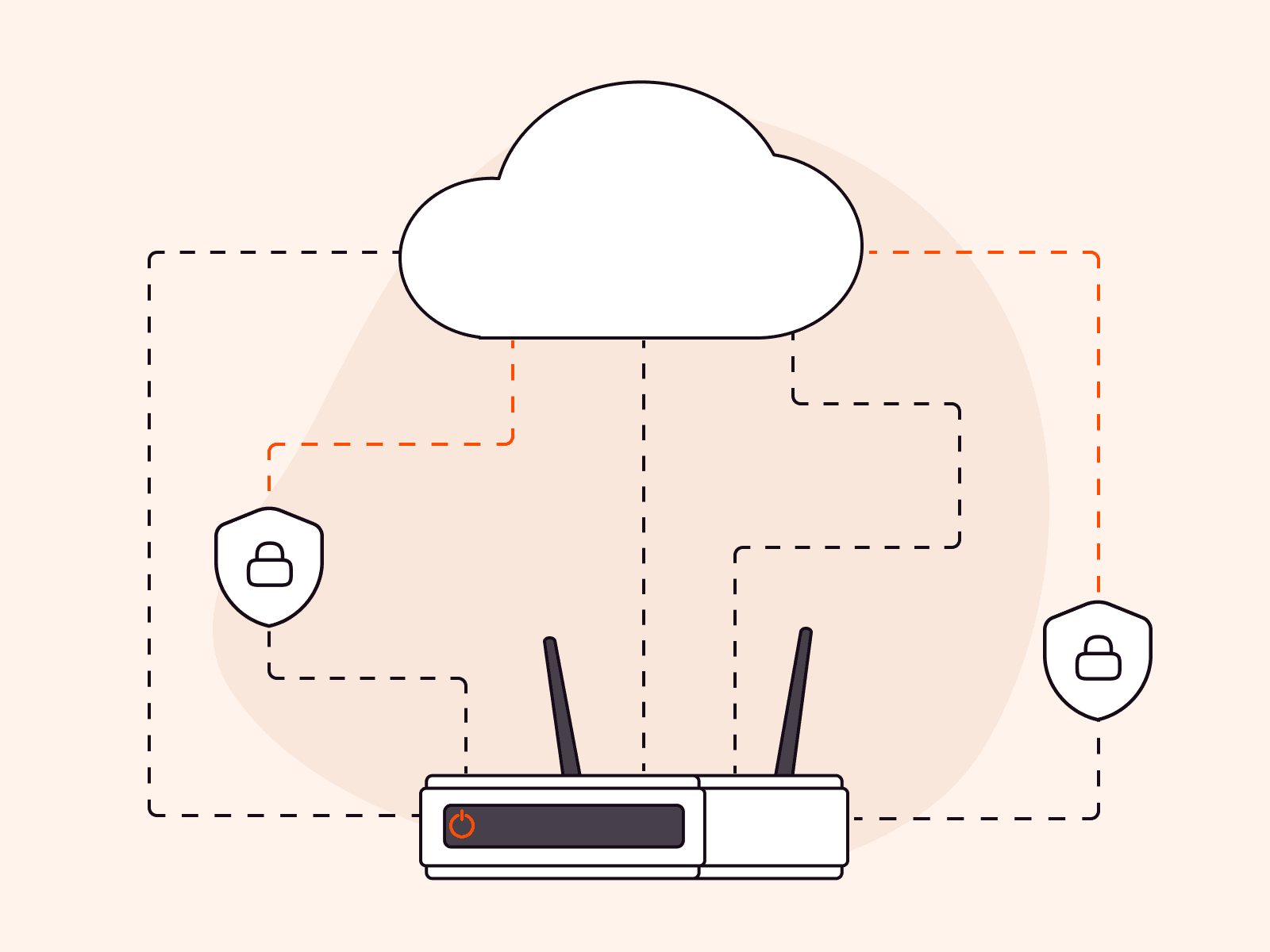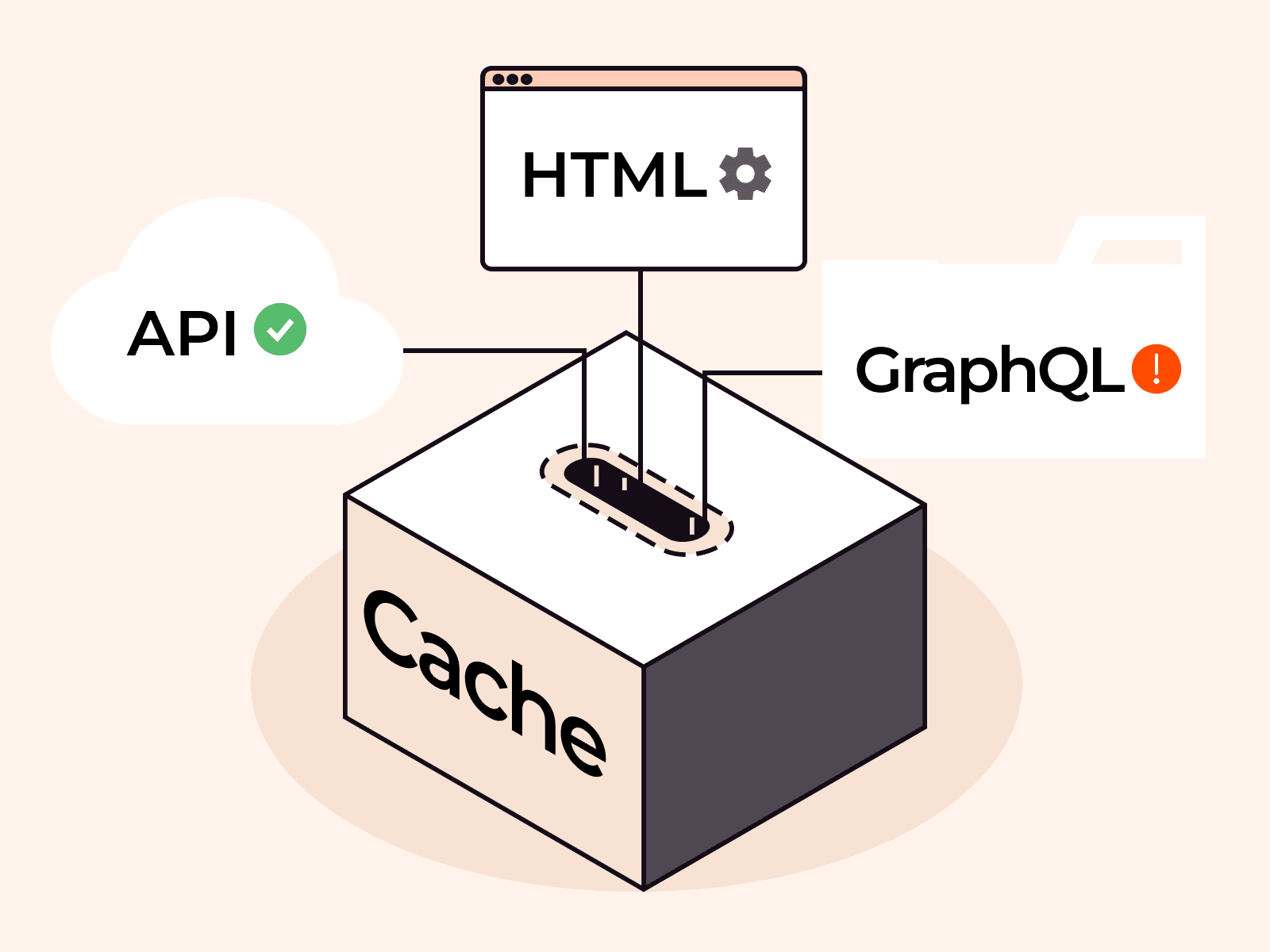Data transmission is sending and receiving digital or analog data between devices. This can be achieved through different mediums, such as cables, optical fibers, or wireless signals. In our daily lives, data transmission is essential, whether sending and receiving emails, answering phone calls, or watching our favorite TV shows. While in business, video conferencing, sending inquiries to e-commerce sites, and streaming services enable global engagement from one device to another.
However, slow loading times on websites or applications may occur due to data transmission issues such as bandwidth, latency, hardware compatibility, and so much more. These common factors can significantly impact both business operations and user experience. This is where the content delivery networks (CDNs) play such a vital role in data transmission.
With this guide, we will walk you through every aspect of the topic, exploring the intricacies of data transmission and how content delivery networks (CDNs) tackle these issues. Additionally, you will gain insight into how data transmission works, the importance of high-speed data transfer, and how you can utilize CDN on your website.
How does data transmission work?
Data transmission involves at least two or more digital devices communicating over a network, and requires a few key components:
- Sender. The device that starts the transmission of data.
- Receiver. The device that receives the data sent by the sender.
- Message or data. This is the information transmitted from one device to another, including text, images, audio, video, or any other form of content.
- Medium. The physical path or channel through which data is transmitted, such as an optical cable or wireless transmission.
- Protocol. A set of rules governing the format, timing, and sequencing of data transmission.
Now, you might be wondering how these elements can work efficiently. Well, there are several ways that data transmission can be carried out. To give you an idea, we can categorize data transmission modes based on three factors.
What are different factors in data transmission based upon?
- The direction of information. This indicates how the flow of information is transmitted. There are three main categories—simplex, half-duplex, and full-duplex—which we’ll explore further in the next section.
- The level of synchronization. This refers to the degree of syncing between the sender and the receiver. Data transmission modes can be categorized as either synchronous or asynchronous.
- The number of bits sent. This number pertains to the bits transmitted concurrently throughout the network. This categorization includes two main types—serial and parallel.
Since several factors are involved, let’s focus on the first one we mentioned. We’ll begin by discussing the different ways we can categorize data transmission based on the direction of information being exchanged. Let’s dive into various modes of data transmission that fall under this factor.
What are the types of data transmission?
When it comes to data transmission, there are various modes based on factors we outlined above. It’s not as simple as just receiving or sending data in one direction or another. Data transmission modes can differ based on these factors.
Here is a closer look at the ways data can be transmitted between parties:
1. Simplex transmission. It’s a mode of communication where the data can only flow in one direction, meaning it’s unidirectional. In this mode, the sender can send data, but they can’t receive it. Similarly, the receiver can only receive data and not send it back. So, it’s a bit like a one-way street, where data flow can only go in one direction.

You may be thinking, “what if the receiver wants to send a message back?” That’s precisely why this mode isn’t as popular as other modes. However, it does have its uses in the business world, where a corresponding reply isn’t necessary. For instance, you may have noticed that radio and TV transmissions, as well as desktop input devices like keyboards and mice, often use the Simplex mode. In these cases, there’s no need for two-way communication between the sender and receiver. If we watch TV or listen to the radio, the simplex transmission sends signals to our devices without needing a response from the sender.
2. Half-duplex transmission. Another type of data transmission mode is known as half-duplex, which allows data to flow in both directions, but only one direction at a time. Unlike simplex mode, which only allows data to be transmitted in one direction, half-duplex allows each station to transmit and receive data. However, each station can only send or receive data at a given time, meaning that when one device sends data, the other can only receive it, and vice versa. It’s similar to a two-lane highway where only one direction of traffic can go at once.

This mode of data transmission is useful when two parties do not need to communicate with each other concurrently. It’s beneficial in detecting errors when there’s a problem with the sender or receiver not receiving or sending data correctly. In such instances, the recipient may need to re-transmit the data.
To illustrate this concept further, consider two people using a walkie-talkie to communicate. They can’t talk simultaneously, so one person must finish speaking before the other can reply. The same applies to internet browsers, where a user sends a request for a website, and the server sends the requested page back to the user. Suppose any errors occur during the transmission process—if this happens, the browser may need to request the server’s data again.
3. Full-duplex transmission. In full-duplex data transmission, information can flow in both directions simultaneously, allowing for two-way communication. Unlike half-duplex, which only allows one direction of data flow at a time, full-duplex enables both stations to transmit and receive data concurrently, making it bidirectional.

The diagram above illustrates how the channel capacity is shared between both endpoints, allowing for simultaneous communication. Full-duplex mode is an ideal choice when two-way communication is required. In contrast, half-duplex mode only allows communication to flow in one direction at a time—as we discussed earlier, much like a walkie-talkie where the sender needs to pause before the recipient can reply.
To better understand full-duplex mode, imagine a phone call between two people where both parties can talk and listen to each other at the same time. Similarly, full-duplex mode enables two stations to communicate in real time, with both endpoints able to send and receive data simultaneously.
Let’s quickly summarize what we’ve learned about transmission modes, their communication direction and channel usage, including the benefits and drawbacks of each mode and the best scenarios to use them. You can refer to the table below for a quick overview.
| Transmission mode | Communication (direction and channel usage) | Bandwidth consumption | Advantages | Disadvantages | Ideal for |
| Simplex | Unidirectional (one channel) | Maximum bandwidth available | Since data only travels in one direction, there are minimal or no concerns regarding data traffic problems | No communication between devices, no error checking or retransmission | Broadcasting, TV/radio transmission |
| Half-duplex | Bidirectional (alternating, one channel) | Lower use of a single bandwidth | Enables bidirectional communication and enables optimal utilization of the communication channel | Slower communication than full-duplex, limited to one-way at a time | Walkie-talkies, Internet browsers, older LAN technologies |
| Full-duplex | Bidirectional (simultaneous, two channels) | Utilizes twice as much transmission bandwidth | As well as being the quickest mode of device connectivity, it allows for simultaneous two-way communication in both directions | Two portions make up the communication channel’s capacity. Data transport also lacks a dedicated path | Telephones, newer LAN technologies, video conferencing |
Now that we’ve explored the various modes of data transmission, let’s dive into the second category, which is all about the level of synchronization between the sender and receiver—synchronous and asynchronous transmission.
Synchronous transmission
This is a full-duplex type of transmission that allows data to be transmitted without start/stop bits or any gaps between them, and the sender and receiver are synchronized by the same clock signal. Using this method is a way of sending information in a smooth, continuous stream without any pauses and interruptions.

As you can see in the diagram, this method of transmission sends data in blocks of bits, which arrive at the receiver as a stream of bits. The receiver needs to group the bits correctly to make sense of the message. Next, the receiver counts the bits as they come in and groups them into units of eight bits. Lastly, the receiver keeps listening to the message even if no data is being transmitted, and it receives information at the same rate that the transmitter sends it.
You may be wondering what the use cases for synchronous transmission are. Well, synchronous transmission can be helpful for real-time data transfer in various fields, including computer networking (such as Ethernet and fiber optic communications), and computer systems (such as CPUs and RAM).
Asynchronous transmission
In this type of transmission, the data is sent in a half-duplex manner, with start and stop bits added to the message during transmission. These bits ensure that the data is transmitted accurately from the sender to the receiver. Unlike synchronous transmission, which relies on a clock signal to maintain a steady pace for sending and receiving data, asynchronous transmission doesn’t have this signal. However, this transmission method can still be reliable because the speed of data transfer is negotiated based on the capabilities of the devices involved.

Based on the diagram above, in asynchronous transmission, the start bit is typically set to binary “0,” and the stop bit is set to binary “1.” Additionally, there is a data gap between each character that begins and ends with the start and stop bits. This gap is called a “mark state,” typically represented by a binary “1” or negative voltage.
Asynchronous transmission works well for slower speeds, but data can always be compressed to increase transfer rates. A common example of asynchronous transmission is when data is entered using a computer keyboard.
Below is a quick comparison of synchronous and asynchronous transmission:
| Descriptions | Synchronous transmission | Asynchronous transmission |
| Timing and transmission speed | Data is transmitted fast in a synchronized manner, with fixed and constant timing intervals | Data transmission is slow at irregular and random time intervals |
| Start/stop bits | Not required, as timing is used for synchronization | Start and stop bits are used to synchronize each character transmission |
| Efficiency | High efficiency, as it uses data blocks of bits without any gap between data | Low efficiency due to wasted time between bytes or characters |
| Distance | Suitable for long-distance data transfer | Excellent for short-distance data transmission |
| Cost | Expensive | Low-priced |
| Ideal for | Video conferencing, live streaming | Keyboard input, mouse input, serial data transfer |
Now that we’ve covered the different levels of synchronization in data transmission, we’ll proceed to the aspect of transmitting data that’s defined by the number of bits sent across the network. This category breaks down into two types: serial and parallel.
Serial transmission
Serial data transmission involves sending data bits one at a time over the transmission channel. This means that the bits are sent sequentially rather than in parallel. To receive data correctly, the sender and receiver must be synchronized. The data stream takes some time to send, but the order of the data bits is sustained, ensuring data integrity. This mode of transmission is ideal for small amounts of data or long-distance transfers, such as data transfer between two computers via serial ports.
Parallel transmission
Parallel data transmission sends multiple data bits at once using parallel channels. It’s like many lanes on a highway where each lane carries different data. Other cables help the sender and receiver communicate. Parallel transmission is useful for transferring large amounts of data quickly, but it works best over short distances. However, if multiple transmission channels are too close, it can affect the quality of the data signal. Additionally, it can be costly because it requires more channels. An example of parallel transmission is how a computer communicates with a printer.
| Feature | Serial transmission | Parallel transmission |
| Definition | One bit at a time is transmitted over a single communication line | Multiple bits are transmitted simultaneously over multiple communication lines |
| Speed | Relatively slower due to single-bit transmission | Due to multiple-bit transmission, it is considerably faster |
| Distance | Long-distance communication | Short-distance communication |
| Cost | Low-cost | Expensive |
| Complexity | Simple and requires fewer components | Sophisticated, requiring additional components |
It’s great to learn about these fascinating aspects of data transmission. However, as regular users, we all know how frustrating it can be when we’re trying to send or receive a message or file and it takes forever to load. With that in mind, let’s dive into the next section of this article and explore how we measure data transfer rates. Since speed is so crucial for transferring data efficiently—especially in e-commerce, media, and our daily communications—understanding transfer rates is fundamental in our comprehension of how data is transmitted.
What is a data transfer rate?
The data transfer rate (DTR) is the speed at which data moves from one location to another. One quick example is when transferring data between two devices, such as two computers on the same LAN network or when moving files from a hard disk to a flash drive. However, the data transfer rate can vary depending on several factors like latency, transmission media, and many others, which we will discuss later. But how do we calculate data transfer rate? Here’s a formula:
Data Transfer Rate (DTR) = Amount of data transmitted / Time (seconds)
where:
- amount of data is the size of the data being transferred, typically measured in bits or bytes;
- time is the duration of the data transfer, typically measured in seconds.
The data transfer rate is usually expressed in bits per second (bps), kilobits per second (Kbps), megabits per second (Mbps), or gigabits per second (Gbps), depending on the speed of the transfer.
Let’s put this in practice: Suppose you need to transfer a file that is 10 megabytes (MB) in size and takes 20 seconds to transfer the file. To calculate, let’s use the formula above so we can determine the data transfer rate. Here’s a table to categorize each data:
| Amount of data | Time |
| We will convert 10 megabytes to megabits as we are using megabits per second (Mbps). (Note: 1 byte equals 8 bits.) 10 × 8 = 80 megabits | 20 seconds |
So, the data transfer rate is:
DTR = 80 MB / 20 seconds = 4 Mbps
Based on this calculation, the data transfer rate for this file transfer is 4 megabits per second (Mbps). To check how fast you can transfer data, you can also look at the speed of your internet service provider by measuring the upload and download speed. One way to do this is by using Speedtest by Gcore, which will help you identify any delays or problems with your connection. Essentially, this test will give you a clear picture of how smoothly your data can be transferred over the internet.
What is the importance of the data transfer rate?
Here are some of the primary examples that indicate how crucial data transfer is for regular users and organizations.
- Productivity. Fast data transfer speeds enable effective teamwork and communication between people and groups. With companies and organizations that depend on the rapid sharing of information to finish tasks and meet deadlines, this is especially crucial.
- User experience. People have grown accustomed to quick and flawless experiences when utilizing websites, apps, and other online services in the digital age. Customers may lose patience and stop using the service altogether due to frustrating delays brought on by a sluggish data transfer rate.
- Edge over competitors. Companies may have an advantage in gaining and keeping clients if they can provide faster data transmission speeds than their competitors. This is especially true for sectors like finance, healthcare, and e-commerce where speed is crucial.
- Data backup and recovery. A speedy data transfer rate can make the difference between a quick and easy process and a drawn-out and stressful one when backing up essential data or retrieving lost information.
- Media streaming. Streaming services rule the digital sphere of today. A quick data transfer rate is necessary for buffer-free streaming whether watching Netflix movies or listening to music on Spotify. Also, big businesses hold live streaming events where they deliver updates for their newest products or services.
What are the factors that affect data transfer rates?
There are several factors that can affect data transfer rates, including the following:
- Network congestion. When a user sends data faster than the network resources can handle, a condition known as network congestion may occur. The data transfer rate is impacted when network resources are used to their maximum capabilities. For instance, imagine you’re at work and all of a sudden you’re having trouble sending a file to a colleague via a shared network because there are too many people using it. This can (and almost certainly will) delay productivity.
- Network latency. The time it takes for data to travel from one point to another can also affect transfer rates. High latency connections can result in slower transfer rates because data has to travel farther and may encounter more delays along the way.
- Bandwidth. The bandwidth of the connection determines how much data may be sent each second. Data can be transferred more swiftly over a link with more bandwidth than over one with less capacity. An example of bandwidth affecting data transfer rates would be downloading a large file over a slow internet connection versus a fast internet connection.
- Type of connection. The type of network connection used for data transfer can also affect transfer rates. For example, wired connections tend to be faster than wireless connections, and fiber optic cables can transmit data at much higher speeds than traditional copper cables.
- Limited hardware and software resources. A client or server with insufficient hardware resources (processing power, hard drive, input/output, and RAM) can affect the data transfer rate for the entire network. Using standard TCP processes, a system with insufficient resources can slow down user queries and data transfer rates. Software, like operating systems or web applications, can also affect data transfer rates even if hardware resources are adequate. For instance, a poorly optimized web browser may need help to handle large files, resulting in slower data transfer rates.
- Load balancing. Load distribution is a technique used in certain devices to optimize performance and prevent overload. Nonetheless, when a high volume of data packets is involved, these devices may become overloaded or misconfigured, leading to issues such as disconnections, retransmissions, or packet loss.
From the perspective of both users and website owners, it is essential to explore reliable options for data transmission. How can we solve some of these issues that affect data transfers? In this context, we’ll now examine the critical role of a content delivery network (CDN) and its significance in high-speed data transfer.
What is the role of content delivery networks (CDNs) in data transmission?
The main role of a CDN is to improve the speed and reliability of data transfer by minimizing latency and reducing the distance that data has to travel. For instance, if a user requests content from a website, the CDN will automatically direct the request to the nearest server in its network. This helps to reduce the time it takes for the content to reach the user, as the data only needs to travel a short distance. Additionally, CDN servers are optimized for high-speed data transfer, which helps to ensure that content is delivered quickly and efficiently.
If your website is hosted on a server in New York and a user in London wants to access it, their request would have to travel a long distance and result in slow loading times. A CDN is a network of servers distributed globally to deliver content to end-users efficiently. When the user in London requests your website, their request is routed automatically to the closest server, which could be the server in London, ensuring faster loading times.
Here are some key points on how CDN benefits data transmission:
- Improves transmission of data by reducing latency and increasing speed
- Optimizes dynamic content delivery by caching content closer to the end-user, which reduces the distance data needs to travel
- Helps manage and distribute traffic to ensure high-quality user experiences
- Mitigates against DDoS attacks and other security threats
In addition, CDNs can also improve the reliability of data transfer by providing multiple copies of content across their network of servers. If one server goes down or becomes overloaded, the CDN can automatically redirect traffic to another server that is available and can handle the load. This helps prevent downtime and ensures that content is always available to users. To learn more about content delivery networks, you can check out our post What is a CDN?, where we discuss in detail how CDNs work.
How does Gcore CDN keep your website and application fast and responsive?
At Gcore, we recognize the crucial role of fast loading times for websites, applications, and downloads on the internet. That’s why we strive to make the internet faster and more accessible with our CDN service. Gcore CDN is tailored to provide reliable and speedy content delivery, ensuring a seamless user experience every time. With our commitment to delivering high-quality service, many businesses have placed their trust in us to assist them in accomplishing their online goals efficiently.
Let’s take a look at some common features of Gcore CDN:
- Low latency worldwide. Your users will experience fast loading times as if your app is always hosted in the same location as they are.
- Outstanding availability. It protects your server from unexpected traffic surges or DDoS attacks, ensuring that your app is always accessible to your users without any downtime.
- Smart asset optimization. Our CDN incorporates advanced techniques like Brotli and Gzip compression, along with optimized image delivery, to significantly reduce file sizes and improve loading times, resulting in better user experience and lower bandwidth usage.
Use cases of Gcore CDN
You may be curious about how CDN benefits various categories in the internet realm. With the following use cases, you’ll see how it can enhance the experience of users and benefit business owners by providing the best possible service.
| Category | Description |
| Website assets | This category includes all website-related assets, such as HTML, CSS, JavaScript, and images. By utilizing a CDN, website assets can be delivered faster to users, resulting in quicker page load times and a better user experience. |
| Speed is crucial with an e-commerce website, and a slow website can lead to lost sales. A CDN can improve website performance by delivering product images and other content quickly to users, resulting in a smoother shopping experience. | |
| WordPress CDN | WordPress is one of the most popular content management systems in the world. A CDN can accelerate the delivery of WordPress content, including pages, posts, and images, making your website load faster and perform better. |
| Gaming CDN | With the growing popularity of online gaming, game publishers and developers need to deliver game content quickly to players. A gaming CDN can accelerate the delivery of game updates, game assets, and other content, resulting in faster load times, lower latency, and a better gaming experience. |
| Software & app updates | Improve the delivery speed of software and app updates, resulting in faster update times and less strain on your server infrastructure. |
| Video-on-Demand (VOD) | Video-on-demand is becoming increasingly popular, with services like Netflix and Hulu leading the way. A CDN can help deliver VOD content quickly, ensuring users have a seamless experience with minimal buffering. |
| Live streaming | Live streaming events—such as concerts, sports events, and conferences—all require fast delivery to prevent lagging or buffering. A CDN can accelerate the delivery of live streaming content, resulting in an improved user experience. |
Website acceleration as a service
At Gcore, we are passionate about making the web faster. Website acceleration as a service is an essential component of modern internet delivery. In today’s quick-paced digital world, users demand faster data transfer and a seamless browsing experience. Gcore CDN offers an effective solution to this challenge by providing optimized content delivery that reduces initial server response time and speeds up webpage loading.
With Gcore CDN, you can accomplish the following:
- Increased session duration. A 55% improvement in page load time (LCP metric) that delivers a 23% increase in session duration.
- Lower bounce rate. A 20% reduction in page load time leads to a 9% decrease in bounce rate.
- Improved conversion rate. A 0.1-second improvement in page load time increases mobile conversion rate by 8-10%.
- Better SEO. Fast websites provide a better user experience and are more likely to be promoted by search engines.
Conclusion
To sum up, data transmission plays a vital role in today’s digital era, as it facilitates the transfer of information across different devices or locations. However, factors such as latency can cause poor delivery of data, affecting user experience and business performance. This is where content delivery networks (CDNs) like Gcore’s can help.
Gcore’s CDN is specifically designed to optimize data transmission, ensuring high-speed delivery of content to end-users by reducing latency. As a result, businesses can enjoy faster loading times, lower bounce rates, and improved user engagement, leading to better business outcomes. Therefore, implementing a CDN is crucial for companies seeking to enhance their online presence and improve their digital performance. If you are interested in learning more, please feel free to contact our experts—we will be happy to assist you!
Related articles
Subscribe to our newsletter
Get the latest industry trends, exclusive insights, and Gcore updates delivered straight to your inbox.

